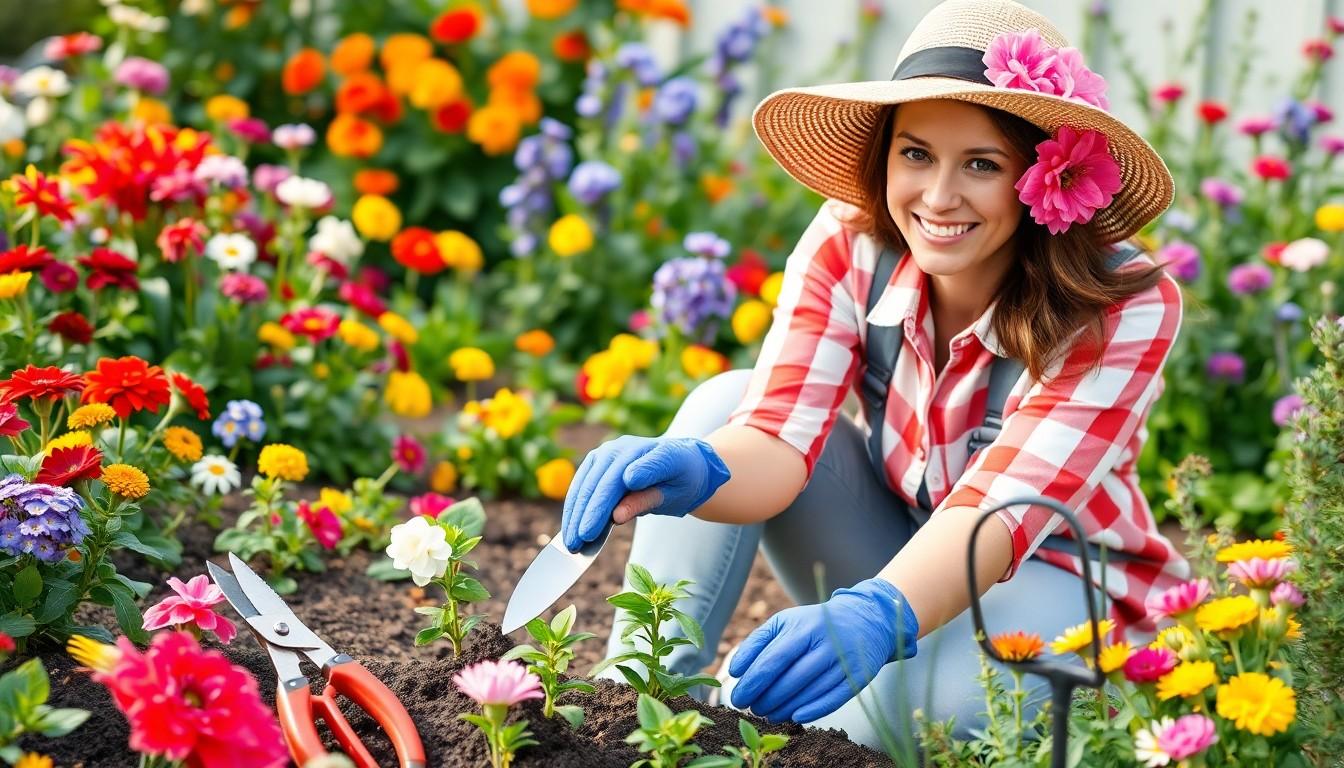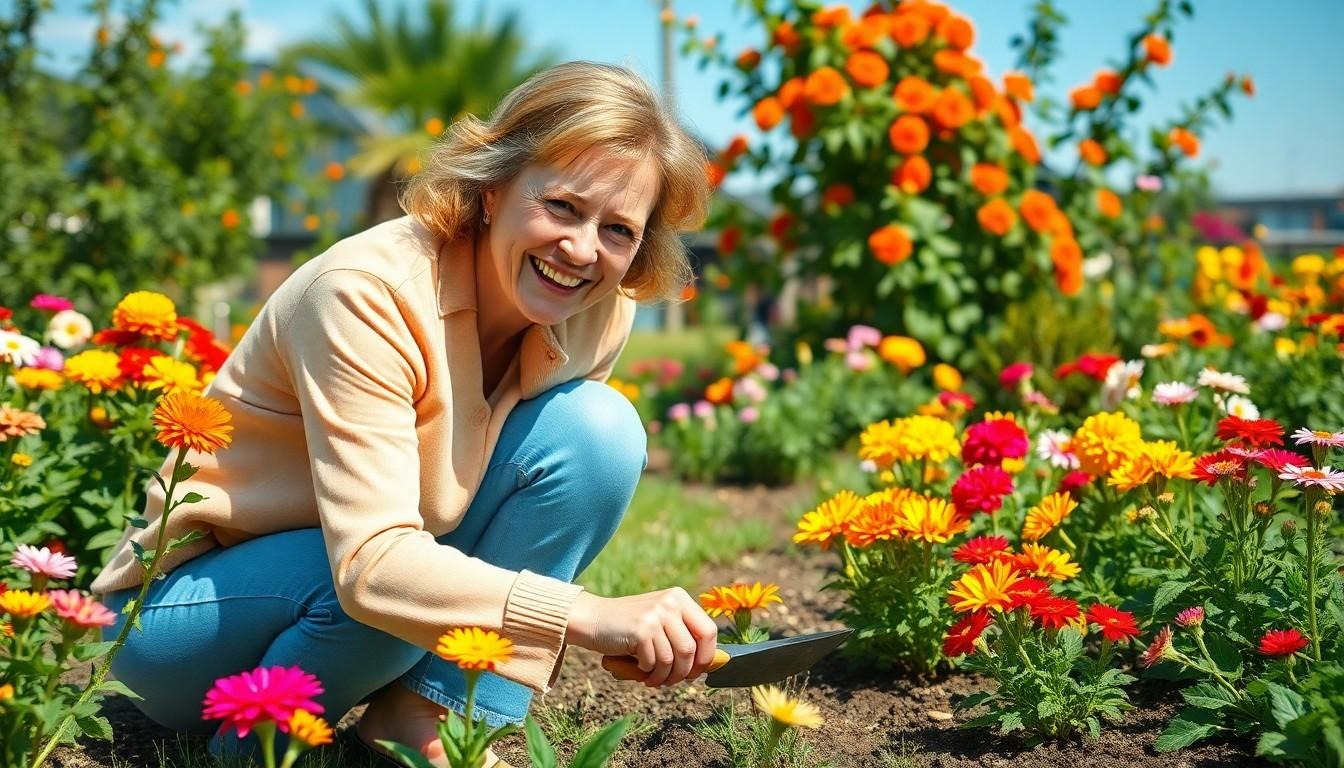As winter bids farewell and the sun starts to warm the earth, a gardener’s heart begins to flutter with excitement. Spring gardening isn’t just a hobby; it’s a glorious celebration of life, color, and the occasional battle with weeds that seem to have a vendetta. Imagine the satisfaction of digging your hands into rich soil, planting vibrant blooms, and watching your garden transform into a masterpiece.
Spring Gardening
Spring gardening plays a crucial role in revitalizing outdoor spaces. Vibrant blooms and fresh greenery emerge, creating an inviting atmosphere. Gardeners engage in essential tasks to prepare for the growing season, including soil cultivation and planting.
Seasonal gardening boosts mental well-being. Interaction with nature reduces stress and enhances mood. Studies show individuals who garden frequently report higher satisfaction levels. Physical activity involved in gardening also promotes health, offering exercise through digging, planting, and weeding.
Nurturing plants during spring fosters a sense of responsibility. Caregiving for growing flowers and vegetables teaches patience and commitment. Children benefit from these activities, learning about life cycles and food sources.
Timing affects productivity. Spring, with its optimal temperatures and increased sunlight, encourages plant growth. Selecting native plants tailored for local climates further enhances success, maximizing resources and minimizing environmental impact.
Moreover, spring gardening aids in pest control. Healthy plants develop resilience against diseases and harmful insects. Diverse planting strategies create a balanced ecosystem in the garden, allowing natural predators to thrive.
Collaboration within the community can enhance spring gardening efforts. Local gardening groups offer shared resources and knowledge, fostering connections. Engaging with others cultivates a sense of belonging, motivating individuals to maintain their gardens actively.
Embracing spring gardening offers numerous benefits. The combination of aesthetic pleasure, physical activity, and community engagement creates a fulfilling experience, enhancing both individual lives and the environment.
Essential Tools for Spring Gardening

Preparing for spring gardening involves gathering the right tools. These tools enhance productivity and enjoyment, making garden work easier.
Hand Tools
Hand tools represent the foundation of any gardener’s toolkit. A sturdy trowel remains essential for planting and transplanting. Pruning shears come in handy for shaping plants and removing dead growth. A reliable garden fork aids in loosening and aerating the soil. Garden gloves protect hands from sharp objects and dirt. Lastly, a weeder ensures efficient removal of unwanted weeds without disturbing nearby plants.
Power Tools
Power tools expedite various gardening tasks significantly. A lightweight garden tiller helps in preparing the soil for planting. Leaf blowers simplify cleanup, effectively removing debris without much effort. Hedge trimmers assist in maintaining neat hedges and shrubs, promoting healthy growth. Lawn mowers contribute to keeping grass trimmed and manicured. Electric or gas-powered sprayers allow quick application of fertilizers or pest control solutions. Each tool aids in creating a vibrant outdoor space and enhancing the gardening experience.
Preparing Your Garden for Spring
Preparing a garden for spring involves several key steps. Attention to soil and plant selection enhances garden growth.
Soil Preparation
Soil preparation establishes a strong foundation for plant health. First, gardeners should remove debris like rocks and dead leaves. Next, testing soil pH and nutrient levels provides insights into necessary amendments. Adding organic matter, such as compost or well-rotted manure, enriches the soil and improves its structure. Tilling the soil loosens it, allowing for better root penetration. Incorporating mulch helps retain moisture and suppress weeds. Healthy soil fosters a thriving garden ecosystem.
Choosing the Right Plants
Selecting the right plants ensures a vibrant garden. Gardeners should consider climate, soil type, and sunlight when making choices. Native plants typically thrive with minimal care and attract beneficial pollinators. Starting with easy-to-grow varieties, such as marigolds, zinnias, and tomatoes, yields rewarding results for beginners. Seasonal vegetables, like lettuce and peas, maximize productivity during spring. Grouping plants that share similar water and sunlight needs simplifies care. Thoughtful selection leads to a flourishing, colorful garden throughout the season.
Spring Gardening Tips and Techniques
Spring gardening involves several essential practices that enhance growth and vitality. This section focuses on key techniques to optimize garden productivity.
Planting Seeds and Seedlings
Plant seeds directly into the soil after the last frost date. Transplant seedlings when they display strong root systems and several true leaves. Gardeners should space seeds and seedlings according to their specific growth requirements. Native plants thrive in local conditions; consider incorporating these for better results. Start with easy varieties such as radishes or sunflowers, which germinate quickly and are forgiving for beginners. Sunlight exposure plays a critical role in plant health; ensure that seedlings receive adequate light throughout the day.
Watering and Fertilizing
Monitor soil moisture regularly to maintain healthy plants. Water deeply and consistently, especially in weeks of dry weather. Use a drip irrigation system to minimize water waste while providing efficient hydration. Fertilizing should occur before planting and then every four to six weeks throughout the growing season. Organic fertilizers, such as compost or bone meal, promote nutrient-rich soil without harmful chemicals. Applying fertilizer according to the specific needs of the plant helps prevent deficiencies. Adjust watering and fertilizing based on observed plant responses to ensure optimal growth.
Common Pests and Diseases in Spring Gardening
Spring gardening thrives with life, but pests and diseases can threaten this vibrant season. Identifying common threats early helps maintain a healthy garden.
Prevention Strategies
Implementing prevention strategies effectively reduces pest populations. Regularly inspecting plants ensures early detection of any issues. Keeping the garden clean by removing debris minimizes hiding spots. Selecting disease-resistant plant varieties strengthens the garden’s defenses. Encouraging beneficial insects, such as ladybugs and lacewings, aids in keeping harmful pests at bay. Companion planting also serves as a natural deterrent; for example, planting marigolds alongside vegetables repels nematodes. Finally, applying organic repellents, like neem oil, can deter pests without harming beneficial insects.
Treatment Options
Utilizing effective treatment options ensures a quick response to pest and disease problems. Insecticidal soap can manage soft-bodied insects like aphids. Applying horticultural oil smothers insects while protecting plants. For fungal diseases, using fungicides specifically designed for garden use proves beneficial. Regularly rotating crops helps limit disease buildup in the soil. Hand-picking pests such as caterpillars or beetles effectively controls their population. Lastly, incorporating beneficial nematodes targets soil-borne pests, providing an eco-friendly solution.

